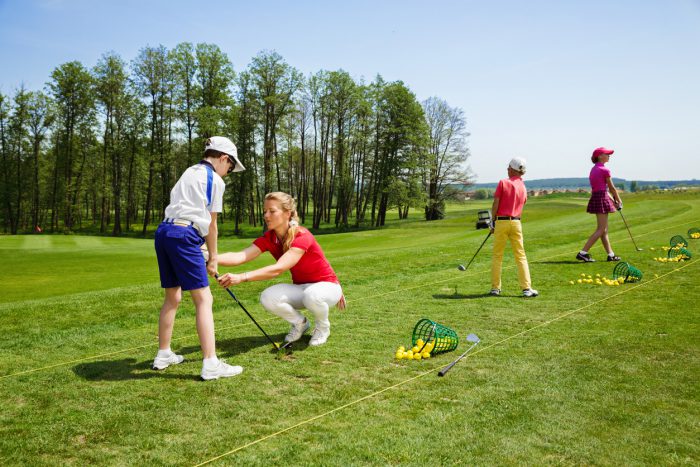How Epsom Golf Club increased its junior section from 26 to 108
According to research group SPORTS MARKETING SURVEYS INC, the average age of the English golf club member is rising. Clubs face a stark choice – get more youngsters in, or face a lingering decline.
“For a club to continue to be healthy long term, it must encourage younger players,” said Richard Flint from the English Golf Union’s (EGU).
“Today’s juniors are the future full fee-paying members of the club. Of course, for that to happen the club also has to retain them as they move into full membership; that’s one of the hardest challenges.”
Flint is encouraged that clubs are showing increasing interest in promoting youth golf. But with so many options open to kids today, just how do you make the golf club their preferred choice?
Epsom Golf Club, Surrey is a good place to find some answers. In 2001 it had 26 junior members and a club member average age of 65. By 2006 it had 108 juniors; and the average age had plummeted to 50.
“Back in 2001 a group of us decided that unless we did something to encourage young children, our club was heading for serious trouble,” said spokesman David Franklin. “The club hatched a plan which involved working closely with a local authority leisure developer. Six of our members qualified as junior leaders through the Golf Foundation, and we went into schools with Tri-Golf, a Golf Foundation initiative that enables young kids to experience the game.

Children at a different golf club
“From here, we set up Golf Foundation ‘Passport to Golf’ classes – five one-hour lessons with the pro. We advertised those in the local press, and with the help of the leisure developer, local schools were notified. Notices even went up in libraries and town halls. People started ringing up. All told, we got 200 kids to those sessions. That encouraged others to come and be involved. Some joined, and membership started to increase.”
The sudden influx of juniors led to the club setting up a junior committee, with various members helping with specific tasks.
Within five years there were no fewer than 14 volunteer members helping the junior section, with seven on that junior committee and seven other qualified junior leaders.
“Underpinning everything is the collective will of the club to get behind the juniors,” said the spokesman. “That has to be the starting point. Epsom is a private members’ club but has an extremely friendly environment.”
He believes there are several further factors integral to the club’s success:
• Make the juniors feel part of the club.
“Kids here are encouraged to take part in the club’s affairs. They get a handbook, bi-monthly newsletters and noticeboards which keep them informed. They’re not treated differently.”
• Have fun nights
“Every so often we’ll have an evening chipping and putting competition open to all the junior members. Their parents turn up too. Afterwards they all go indoors, have something to eat and meet all the club officials – which helps to make them feel part of the club.”
• Run plenty of competitions
“Kids love competitive stuff. We have two competitions every month, together with junior roll-ups on Tuesday evenings and Sunday afternoons. Girls can play in all ladies’ competitions while boys with a 15 handicap or better can play in the men’s.”
• Stage social occasions
“At Easter, summer and Christmas we have a big competition in the morning followed by lunch, and everyone wins a prize.”
• Relax the dress code
“But we do not allow them to slop around in flip flops and jeans. The whole approach is structured, yet friendly.”
These measures, together with free coaching, earned Epsom GC GolfMark accreditation – which recognises a club as having junior-friendly facilities.
The mark is more than just a badge; its award gives a club the opportunity to receive extra funding through local authorities.















A great article. My local club is exactly as Epsom in 2001, average age 65. I and my two children (11 yrs) are members of our local golf club. Unfortunately there have been no junior competions since membership declined in 2008. I ask the Council they say its a “cyclical thing”. Which is of course rubbish – they are just unwilling to tackle the issue – key players have been around for too long. Your article sums in up nicely. There needs to be political will for things to happen this is not the case with my local club. This year i will change membership to another club with an active junior section. However I will highlight what was done at Epsom at up coming AGM and challenge Council to act!